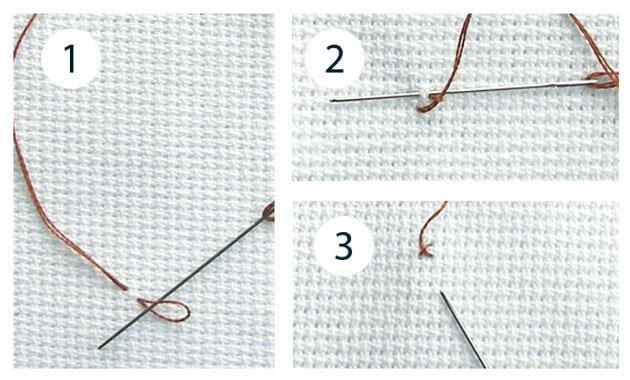 How Do I Care About My Embroidery?
How Do I Care About My Embroidery?First Steps in the Cross-Stitching

Let's stitch!
A convenient stitchings starts with marking on canvas. Spacing 10 cells per step is the most convenient option. To mark a pattern, you typically use special markers. There are of two varieties: washable (with wet cloth) markers and markers disappearing in 24 to 72 hours. Besides, embroidery enthusiasts mark out a pattern with threads by way of sewing on canvas. Make sure your marking targets fields rather than the pattern. Lead pencil does not fit the marking. Washing it out is fairly hard.
Edge your product with buttonhole stitch manually or with overlook (serger). You may also smear white glue over the edges, which is easy to wash out once the work is done. That will prevent powdering of the edges refining your handiwork.
If your embroidery is not too big, you would rather start stitching from the middle. For that purpose, you need to find the centre of canvas and and the centre of the layout or the embroidery. You will easily do that folding the canvas in half. Our patterns mark the centre with black triangles all round the pattern.
Where canvas is available in adequate quantity, you would rather sew from its corner. Subject to the direction of cross-stitch to be made, start from left or right bottom corner. Please note you always start from the bottom, or else the downward stitching overlaps the pattern.
Threading the needle
Seems pretty basic, but poses a challenge too often. Needle threader is a handy option, yet is not an ultimate solution for all the cases. When threading the needle keep flat the running end. Wet the thread and flat its tail.
If you need to insert several threads or a wool thread, try the following technique: pinch off a small piece of cottonwool, just a couple of fibres. Wind them up over the running end of the thread. That would create a kind of narrow extension of the thread, now made of the cottonwool fibres. Thread the needle, remove the cottonwool from the tip.
Fastening off
In the case of a double-thread stitching: folding the thread of double length in half facilitates the job greatly. Make the first stitch and secure the thread sending the needle through the loop resulted from folding the thread.
In the case of odd number of threads: Needle into the canvas intermesh, pull over 2 to 3 cells. Cross-stitch over the resulted stitches as though sewing them up.
In the case of a single-thread stitching: fasten off the thread sending it through a mesh of canvas, and cross-stitch it from above.
The Cross Stitch Seam
A Cross Stitch comprises two crossed stitches. When making this stitch observe that all the top stitches run into a single direction. Having secured the twice folded thread, pull it out on the front side; stitch from the left bottom corner to the top right corner. Complete the required number of stitches with a half cross stitch. Next, cover them with a half-cross stitch from the top left corner to the right bottom corner. The horizontal bands come from inside out.
Make sure your needlwork keeps the stitches inclined in the same direction. Otherwise, the same colour differs in hues.
Avoid long stretches (over 2 cm) as they may slack or tension the fabric, show through. Observe the thread tension ensuring its uniformity.
Once the needlework completes or the thread is over, send the tail over the reverse side in a couple of stitches.
Inside Out:
We stick to the opinion that the reverse side shall be neat.
The reverse should be perfect, if you embroider over gown or rushnik towel. Indeed, it is to be exposed.
However, if you embroider a picture, it is all right to have some tails and short, for a couple of stitches, transitions.
Enjoy!
Related Articles
 How Do I Care About My Embroidery?
How Do I Care About My Embroidery? Do-it-yourself cross stitch bookmark
Do-it-yourself cross stitch bookmark Basic rules of embroidery
Basic rules of embroidery Stem Stitch
Stem Stitch





